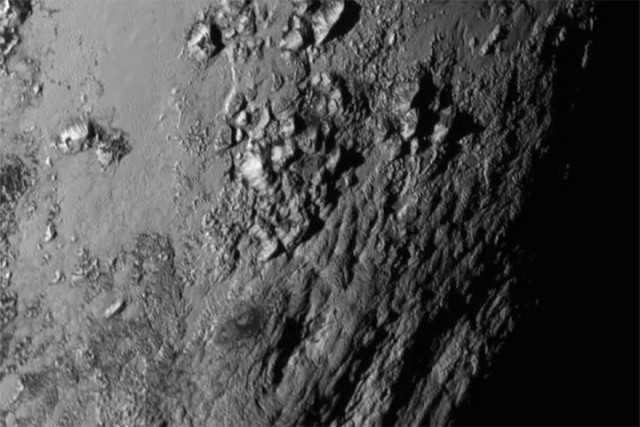
In just the last week, our understanding of the solar system has greatly expanded. Pluto has transformed from a mere speck of light into an entirely novel planet. Here, we showcase a compilation of the most significant findings uncovered by the New Horizons probe.
How far is Pluto from Earth?
This gif illustrates the evolution of the resolution of images of Pluto over the years, from 1930 to 2015.
New Horizons is undoubtedly one of NASA’s most ambitious missions in recent history. Launched in January 2006, the interplanetary spacecraft reached Jupiter just a year later. By utilizing gravitational maneuvering around the massive planet, the spacecraft was able to gain speed and, after nearly 8 years, finally arrived at Pluto, covering a distance 32 times greater than the distance between the Earth and the Sun. This distance is truly immense, and the data transmission from the onboard devices of the spacecraft is incredibly slow, at only about 1 kilobyte per second. NASA experts anticipate that it will take approximately a year (around 470 days) to transfer all the spectrographic, photographic, and isometric data about Pluto and its moons that has been stored on the two onboard flash drives.
The size of it is bigger than anticipated
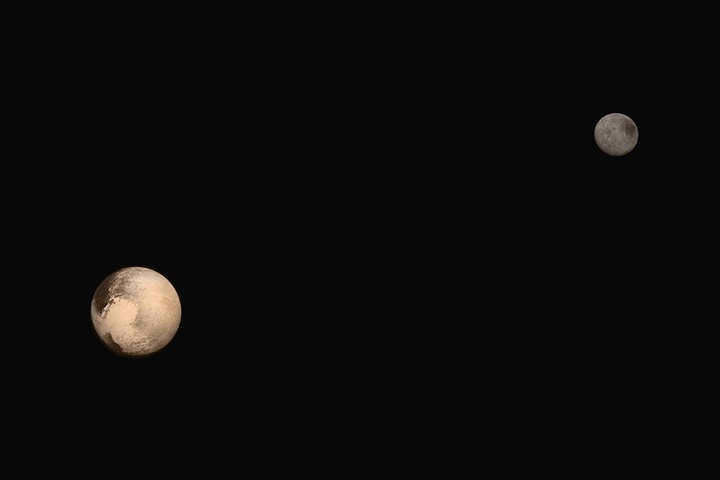
A photograph of Pluto and its companion Charon taken by the New Horizons spacecraft has provided scientists with valuable data about the size of the distant planet. Despite its thin atmosphere, the spacecraft was able to gather enough information when it approached Pluto. The data revealed that Pluto has a diameter of 2370 km, which is smaller than the distance between Moscow and Omsk. However, this measurement was larger than previously believed, causing some to argue that Pluto should be reclassified as a full-fledged planet rather than a dwarf planet.
Advocates for recognizing Pluto as a dwarf planet, on the other hand, contended that it was merely one among many such celestial bodies in the Kuiper belt (an area akin to the asteroid belt, where remnants from the formation of the solar system have gathered) and not even the most sizable of them – Erida was deemed larger at that time. Consequently, to classify it as a planet in the truest sense of the term, like, for instance, Mercury, would be inappropriate. However, the revelation that Pluto surpasses Eridas in size is unlikely to undermine the argument or offer an opportunity to challenge its status. Particularly since new dwarf planets occasionally emerge in the Kuiper belt, some of which may prove to be larger than both Pluto and Erida. Moreover, Erida still outweighs Pluto in mass, as it is significantly denser.
The actual shade of its outer layer

Pluto and Charon, shown in vibrant hues using color filters
Photo: NASA/APL/SWRI
Not widely known is the fact that the images of Pluto that became popular on social media platforms do not accurately depict the true colors of the planet’s landscapes. The colors in the images were deliberately enhanced using filters to highlight variations in surface structure. This process was instrumental in aiding scientists’ comprehension of the chemical composition of the ice and in estimating the age of geological features. Furthermore, it provided valuable insights into how space weather has impacted surface dynamics.
What is the true color of the surface of Pluto? When the Hubble Space Telescope captured images of the distant planet in 2002, scientists believed that it had a red-brown hue. However, more recent and detailed color images taken by detectors on New Horizons have confirmed these initial assumptions. It is believed that the reddish-brown color is a result of a chemical reaction between methane molecules in Pluto’s atmosphere and specific ultraviolet radiation emitted by both the Sun and distant galaxies. Interestingly, a similar phenomenon has been observed on Titan, Saturn’s moon, as well as Triton, one of Neptune’s moons.
The peculiar lack of impact craters

Pluto’s surface topography
Image credit: NASA/JHUAPL/SWRI
Upon closer examination of the initial images of Pluto’s surface, researchers were particularly taken aback by the absence of craters. It is well-known that most planets in our solar system are heavily pockmarked with indentations caused by asteroid impacts. Planets that lack craters (or have very few) like Earth, Venus, and Mars are geologically active, resulting in the gradual burial of craters under successive layers of new rock. Therefore, scientists have proposed that Pluto’s surface cannot be more than 100 million years old, which, in geological terms (given that the planet itself formed 4.5 billion years ago), is a relatively short span of time.
Potential geological activity
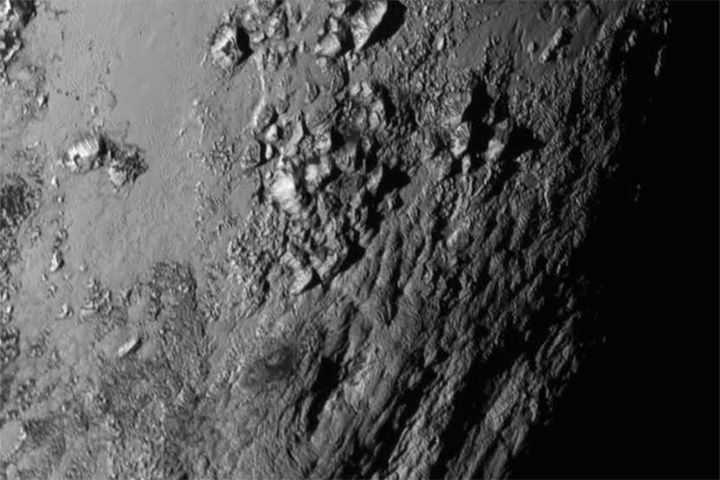
Ice mountains found on the surface of Pluto
Image: NASA/JHUAPL/SWRI
There must be something that fuels geologic activity. However, what could possibly be fueling Pluto? Many planets (including Earth) rely on the slow decay of radioactive materials to generate heat within their interiors. Yet, Pluto is too small to contain sufficient amounts of these materials. Typically, small planets with active geology, like Jupiter’s moon Europa, are heated from within due to tidal acceleration. They experience a constant shrinking and expanding, getting closer and farther away from larger celestial bodies, resulting in the heating of their interiors. However, this scenario is unlikely for Pluto, as there are no significant nearby planets that could influence it.
These inquiries hold special significance as their findings could have implications for a multitude of other celestial bodies.
The composition of the core on Pluto
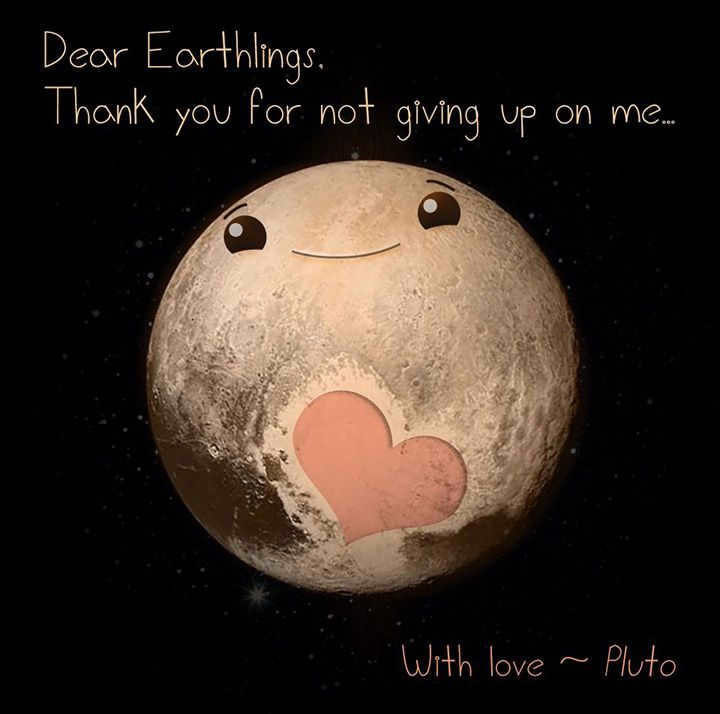
The heart-shaped spot on Pluto has become a popular image, attracting attention from all over the world.
Photo: dorkly.com
The New Horizons spacecraft has captured an incredible sight on Pluto – a spot shaped like a massive heart. This unique feature has quickly gained viral attention, captivating audiences across various social networks. Scientists have determined that the heart-shaped spot was formed as a result of a powerful collision that occurred millions of years ago. The enormous depression is believed to be filled with frozen gases, such as nitrogen, methane, and carbon dioxide.
Furthermore, researchers were astonished to discover vast mountain ranges made completely of ice on Pluto. Some of these peaks reach heights of up to 3 km, providing further evidence of potential geological activity on the dwarf planet.
A unique ambiance
The spectrometer on board the New Horizons spacecraft was able to capture nitrogen atoms that were present in Pluto’s atmosphere. Surprisingly, these nitrogen atoms were found at a distance greater than seven times the radius of the dwarf planet, which is much farther than previous calculations had predicted. Interestingly, no other elements were detected, leading to the conclusion that Pluto has the purest nitrogen atmosphere of all the planets in our solar system.
Furthermore, the study of these particles has also revealed that their escape from Pluto’s atmosphere is happening at a faster rate than expected. This process, known as atmospheric escape, has occurred in the past on Earth billions of years ago. It is believed that the removal of excess nitrogen from the atmosphere may have played a role in the development of life on our planet.

A photograph of Charon, the largest moon of Pluto, has been captured by NASA/JHUAPL/SWRI, providing valuable data and detailed images.
During the New Horizons flyby, scientists were able to gather information about Pluto’s five moons, including Charon. Previously, these satellites had only been observed as faint points of light.
Contrary to previous assumptions, Charon is not just a featureless icy sphere. Instead, it is a complex world with various geological features such as cliffs, depressions, and deep crevices. In fact, one of these crevices is even deeper than the Grand Canyon. Additionally, despite having some craters, Charon has fewer than expected, suggesting the possibility of ongoing geological activity. Interestingly, the moon also exhibits a large, enigmatic dark spot that took researchers by surprise. This spot is likely a crater that formed a long time ago and may have gradually filled with gases over time.
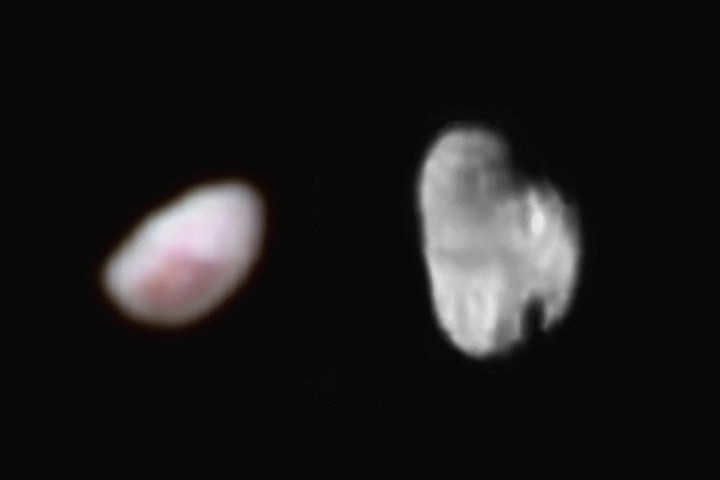
There have been some intriguing revelations about Nicta and Hydra, two additional moons out of the five that orbit Pluto. Nicta, measuring 42 by 36 km, has an enigmatic red spot that is believed to be a crater. On the other hand, Hydra has a shape resembling a large gray mitten with dimensions of 55 by 40 km. We will have to wait until mid-October to see photographs of the remaining two moons, Kerberus and Styx.
In 1930, the Lowell Observatory made a groundbreaking discovery – they found a new addition to our solar system, Pluto. For over seven decades, Pluto was celebrated as the ninth planet, until scientific advancements revealed a new understanding of our celestial neighborhood. Today, we know that there are eight planets in our solar system, with Pluto being reclassified as a dwarf planet. The story of Pluto’s discovery and its subsequent reclassification is explored in detail in an article on altapress.ru.
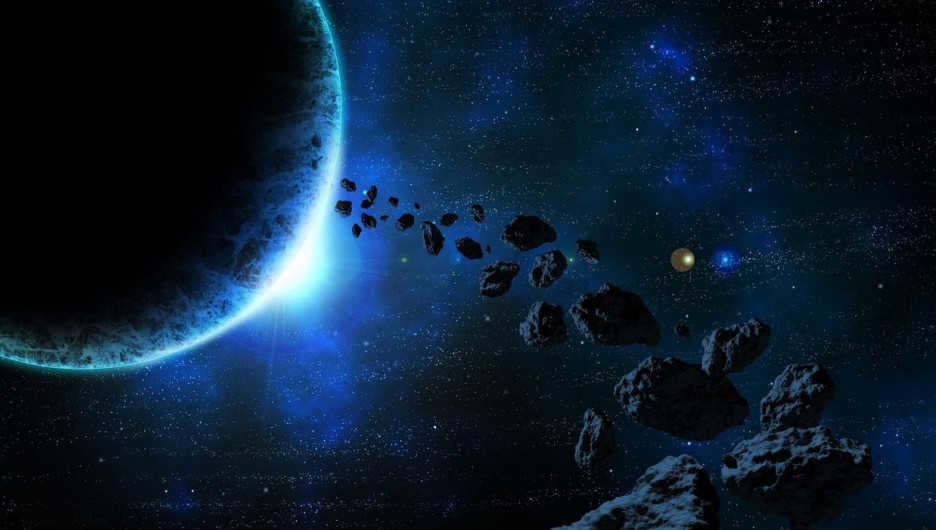
Discovery of Pluto: A Brief History
Scientists had predicted the existence of Pluto almost a century before its actual discovery, as documented by v-kosmose.com. They had observed that the orbit of Uranus was being influenced by another planet, which they believed to be the ninth planet in our solar system. Urben Leverrier had even made an estimate of its approximate location. However, it took a long time to actually locate this celestial body.
The discovery finally took place on February 18, 1930. The astronomer Clyde William Tombaugh dedicated nearly two years to studying images of the night sky. He specifically looked for objects that changed their position over time in the images. It was on the cards for January 23 and 29 that he finally found the changes he was looking for.
This choice was reached by the Lovell Observatory, where Tombaugh was employed. The researchers received assistance from an 11-year-old girl from Oxford. She was one of numerous individuals who sent letters to the observatory containing different name suggestions. The notion of Venice Bernie appeared to be the most fitting to the scientists. The girl had a fascination with classical mythology, hence she selected the name of the Greek deity associated with the realm of the dead for the planet.
Composition of Pluto
Pluto is composed mainly of rock and ice, with a mass that is about six times less than the Moon and a volume that is three times smaller. Its relatively small area measures 17.7 million square kilometers, which is equivalent to the size of three Australian continents. Due to its great distance from the Sun, the surface temperature of Pluto can drop as low as -240 °C. The temperature rise on Pluto is generally not significant, averaging around 20 °C.
Status of the planet
Pluto was designated as the ninth planet from the Sun in the solar system in the spring of 1930. However, its status changed in 2006 during the assembly of the International Astronomical Union. Scientists determined that Pluto better fits into the category of small (dwarf) planets. After extensive discussions, scientists from 75 countries established criteria for defining the status of a planet. This new classification allowed for clearer distinction of which objects in the Solar System can be considered planets. During the debate over Pluto’s status, Venetia Berni, an elderly individual, expressed her disinterest in such discussions but personally preferred for Pluto to remain a planet, as she stated in an interview with the BBC.
Distinguishing minor planets from regular planets
Ever since, a planet has been characterized as a celestial object “that revolves around the Sun in an orbit that is unique to that celestial object, possesses enough mass to produce a gravitational field, resulting in that celestial object taking on a spherical form.” Even though minor planets revolve around the Sun, possess sufficient mass to maintain their spherical shape, and are not satellites of planets, they are unable to autonomously eliminate other objects from their orbit.
If you come across a typo, simply highlight it using your mouse and then press Ctrl+Enter to let us know.

News
NASA Director Jim Bridenstine has granted Pluto the status of a planet. Other astronomers have previously reached a similar conclusion.
Dwarf planet or object in the solar system?
On August 24, 2019, experts celebrated a significant milestone – it has been exactly 13 years since Pluto officially became classified as a dwarf planet (losing its status as a planet). It was previously considered a planet in the solar system, but it has now been reclassified as a dwarf planet.
Not all experts agree with Jim Bridenstine, the director, who argues for including Pluto in the category of planets in the Solar System.
The executive, strolling around the University of Colorado campus, was heard saying, “In my opinion, Pluto should still be considered a planet. It’s safe to say that the head of NASA has officially recognized Pluto as a planet.”
The idea that the object is only classified as a dwarf planet originated from Soviet astronomers. In August 2006, the International Astronomical Union defined the criteria for what constitutes a planet. Pluto did not meet these criteria, leading scientists to classify it as a dwarf planet, along with Ceres and Erida.
Dwarf planets are celestial objects that orbit the Sun. They have enough mass to be shaped like a sphere due to the gravitational forces. Small bodies do not have these characteristics.
Dwarf planets are not considered satellites. What sets them apart from regular planets is that they cannot clear their orbit of other celestial bodies.
The International Astronomical Union has officially designated only five objects as dwarf planets.
Furthermore, there are numerous objects that could be categorized as “dwarf planets”. It is worth mentioning that the notion of labeling Pluto as a planet, which was previously proposed by planetologist Philip Metzger from the University of Central Florida, suggests that the existing classification is open to revision. The accuracy of this classification is questionable.
Goblin
Following the discovery of Pluto, scientists have now identified another celestial body. It has been informally named Goblin. This object is located a staggering 80 times farther from the Sun than Earth. Interestingly, its orbit is intersected by the previously discovered planet X. The existence of this planet, however, is yet to be proven in the future.
Scientists have theorized that there could be thousands of similar celestial objects in the solar system, resembling Goblin.
As a scientific advisor to the editorial board of the “How and Why” website, it is important to note that our publication, kipmu.ru, is registered with the mass media EL № FS 77 – 76533. Furthermore, it is recognized as a socially significant resource by the Russian Federation, as determined by the Ministry of Digital Development, Communications, and Mass Media of the Russian Federation.
Defining Pluto in Modern Terms
Currently, Pluto is officially considered a dwarf planet.
A dwarf planet is an astronomical object that revolves around the Sun, possesses sufficient mass to maintain a spherical shape due to gravitational forces, but lacks the ability to clear its orbital path of other celestial bodies.
Pluto shares more similarities with a comet rather than a traditional planet.
What we know about Pluto
Pluto orbits the Sun at different distances, ranging from 4.4 billion kilometers to 7.4 billion kilometers. It is located in an area of space called the Kuiper Belt, where it is the largest object.
The Kuiper belt is a disk-shaped region that exists beyond the planet Neptune. It is home to thousands of small icy objects that are similar in size and composition to Pluto.
Pluto is approximately three times smaller in volume than Earth’s moon. Its total area is 17.7 million square kilometers, which is slightly larger than Russia’s area of 17.1 million square kilometers.
Pluto takes approximately 248 years to complete one orbit around the Sun, and a single day on Pluto is equivalent to about 6.5 Earth days.
What prompted the focus on Pluto’s status initially
In 2003, a celestial object was observed beyond Pluto, initially classified as the tenth planet. It was believed to be larger than Pluto at the time, although this has since been proven incorrect. The object was given the name Erida.
The discovery of Erida sparked a debate regarding the criteria used to define a planet and whether Pluto should be considered one. Eventually, a resolution was passed, outlining new criteria for defining a planet. Due to their size and irregular orbits, both Pluto and Erida did not meet these criteria and were classified as dwarf planets.
Pluto is also referred to as a plutoid, which is a type of dwarf planet located farther from the planet Neptune within the solar system.
Why Pluto is no longer classified as a planet
According to the resolution, a planet is defined as a celestial body that is spherical in shape, orbits around the Sun, and has cleared its orbit of other debris. While Pluto meets two of these criteria – it is spherical in shape and orbits the Sun – it fails to meet the third criterion of clearing its orbit like the other eight planets do. Let’s delve into this in more detail.
When planets form, they become the dominant gravitational force in their orbit around the Sun. If they encounter smaller objects in their path, these objects are either absorbed or captured by the planet’s gravity. However, Pluto has objects of similar mass in its orbit, which means it is unable to clear its orbit of other debris.
There are other factors that have contributed to Pluto losing its planet status:
- Pluto has a dense and rocky surface, distinguishing it from its neighboring gas giants like Jupiter, Saturn, Uranus, and Neptune;
- Pluto’s orbit is unique, as it deviates from the plane in which all other planets in the solar system orbit the sun, with a 17-degree angle;
- Pluto’s largest moon, Charon, shares an orbit with Pluto and is only half its size, revolving around a common center of gravity.
Pluto’s status continues to captivate astronomers
Despite being classified as a dwarf planet, Pluto still holds a great deal of interest for scientists. In fact, NASA has gone so far as to launch the New Horizons spacecraft on a mission to explore this icy celestial body. Upon reaching Pluto in 2015, the spacecraft captured the first-ever high-resolution images of its surface. Regardless of its official designation, Pluto remains a subject of intense study and fascination within the astronomical community.
Pluto, since 2006, has not been classified as a full-fledged planet and is now considered a dwarf planet. Unlike Earth, Mars, Mercury, or Venus, it shares more similarities with asteroids. Although Pluto possesses satellites and an atmosphere, its mass is relatively small when compared to other celestial bodies. Scientists have provided evidence based on distinctive features to justify why Pluto is not classified as a planet. We will delve into this topic further and explain in detail.
Why is Pluto not considered a planet?
Pluto, discovered by Clyde Tombaugh on February 18, 1930, is classified as a dwarf planet. It falls under the category of transneptunian objects, which are celestial bodies that orbit the main star of our solar system. While Pluto is the tenth most massive planet in our system, excluding satellites, it is no longer considered a full-fledged planet.
In 2005, the discovery of Erida, a dwarf planet with its own satellite similar to Pluto, raised questions about Pluto’s planetary status. Furthermore, between 2004 and 2005, two more objects – Haumea and Makemake – were found, with dimensions comparable to Pluto. These discoveries prompted scientists to reconsider the criteria used to classify cosmic bodies and whether Pluto should still be classified as a planet.
Let’s delve deeper into this matter. The celestial bodies in the solar system, excluding Pluto, exert their dominance in their respective orbits. They do so through the force of gravity. When Earth, Jupiter, Mars, and other planets come into contact with asteroids, satellites, comets, or debris, they either absorb them or propel them further into space. This results in the transfer of cosmic small objects from one planet to another.
Pluto, being a dwarf planet, possesses only 0.07 of the total mass in its orbit. This is insufficient for it to clear its path. Not only Pluto, but Erida, Makemake, and Haumea are also categorized as dwarf planets now.
The reason why Pluto is no longer considered a planet is explained in an article on Nur.kz.
Pluto: Fascinating Information
Now that we are aware of the planet that has been excluded from the list of major planets in our solar system, let us explore some intriguing facts about Pluto:
Based on the article, we now know which planet is not classified as a planet in our solar system. Scientists have established specific criteria that have identified 8 planets in our system, instead of the previously believed 12. For celestial bodies like Pluto, an alternative definition was created – a dwarf planet.
Get ahead of the curve
Join our mailing list to receive the most up-to-date information, stunning visuals, captivating videos, and unique content from Kazakhstan.
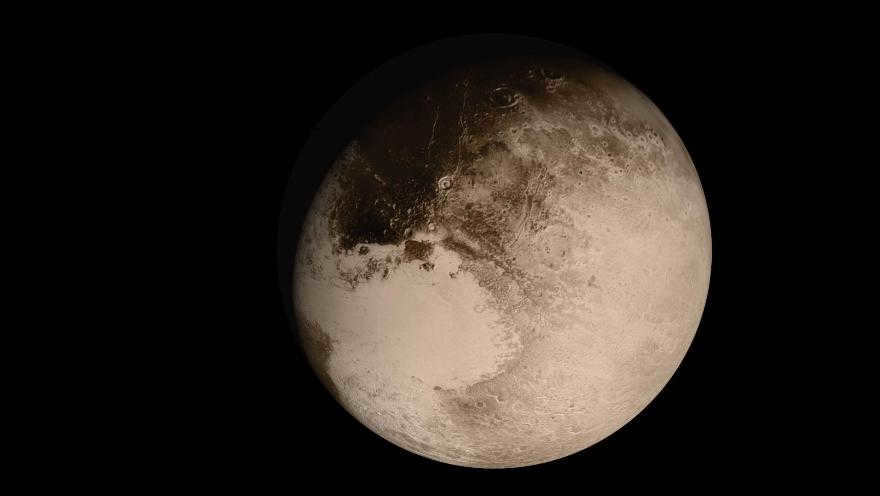
Today, we will discuss the journey of Pluto from being a planet to becoming a dwarf planet, with an explanation that is easy for children to understand. This information will be beneficial for both children and their parents.
Let’s delve into the discovery of Pluto, the year it ceased to be considered a planet, the criteria that led to this decision, including its lack of mass, and the role of the New Horizons mission in shedding light on this celestial body.
To start with, let’s explain to kids that Pluto has discovered its permanent position in the Kuiper Belt. This region of our solar system is where asteroids reside, composed of rock, metal, and ice.
Many children, along with their parents, might not be aware that this planet was named after an 11-year-old girl in honor of the mythical guardian of the underworld. Pluto has three moons: Nix, Charon, and Hydra. Charon is roughly half the size of the planet, while the other two are quite small.
- Pluto orbits around the Sun.
- It is massive enough to have its own gravitational force and form a spherical shape.
- Pluto has cleared the space around its orbit, meaning there are no other objects nearby that are not affected by its gravitational pull.
Eris did not meet this criteria, and to everyone’s surprise, neither did Pluto! It failed the last requirement.
In 2006, NASA launched the New Horizons mission to explore Pluto. The primary objective of the mission was for the spacecraft to reach the outer reaches of the solar system within a span of 9 years, and it accomplished this goal successfully. Scientists believe that there may be numerous other dwarf planets present in our solar system, but due to their considerable distance, they remain largely unexplored. However, there is hope that further study of the Kuiper belt could reveal new celestial bodies. Hence, it is now understood why Pluto is no longer classified as a planet. To gain a better understanding of the appearance and surface features of this dwarf planet, you can utilize our collection of photos, videos, drawings, and interactive models available online.

Once upon a time, there was an astronomer residing on the moon,
and he meticulously observed and counted the celestial bodies:
Firstly, he spotted Mercury, marking it as the first planet in the solar system. Next, he identified Venus, establishing it as the second planet. He continued his quest and encountered the third planet, Earth. Following that, he discovered Mars, designating it as the fourth planet. As he scanned the sky further, he spotted the colossal Jupiter, proclaiming it as the fifth planet. Not too far behind was the majestic Saturn, which he regarded as the sixth planet. Continuing his journey through the cosmos, he stumbled upon Uranus, recognizing it as the seventh planet. Finally, he encountered the mesmerizing Neptune, recognizing it as the eighth planet. And lastly, he discerned Pluto as the most distant planet in the solar system. The astronomer was so captivated by his findings that he exclaimed, “If you are unable to witness the splendor of these celestial bodies, I implore you to leave immediately!”
Venus, Earth, Mars, Mercury, Neptune, Saturn, Uranus, and Jupiter.
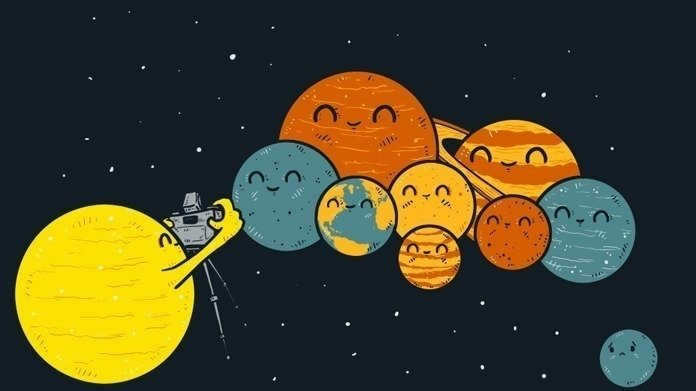
The recent surge of scientific interest in Pluto and the subsequent discoveries have caused quite a commotion and captured the global spotlight. However, it is not just these events that have made a lasting impact on history. The very act of discovering this celestial body has sparked numerous speculations and fascinating contemplations.

Pluto: A Brief Overview
Pluto’s surface composition has been shaped by the presence of liquid material, potentially an ocean hidden beneath its icy exterior. The theory of a comet-like structure also provides an explanation for one of Pluto’s mysteries: its relatively low carbon monoxide levels compared to other celestial bodies in our solar system.
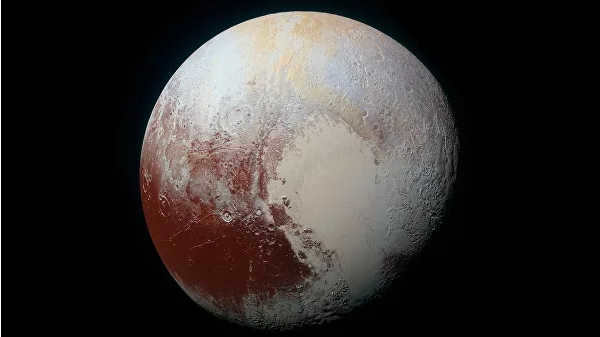
Based on the comet theory, it is possible that the entire amount of monoxide is located within the core of the small celestial body, although this cannot be confirmed with certainty. The planet Pluto appears to exhibit signs of being “vibrant” or active.

The layers on this celestial body are constantly shifting and transforming, although the process occurs at a gradual pace. Moreover, the ice found here exhibits a remarkable diversity in its composition, comprising of carbon monoxide, nitrogen, and methane.
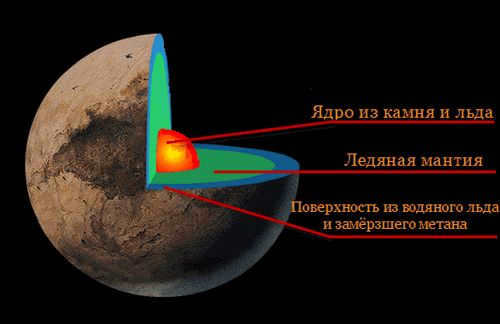
“Pluto is six times less massive than the Moon, and its total surface area is similar to that of Russia.
It takes Pluto 248 years to complete one orbit around the sun.
By the way, this period is known as the sidereal period, and the shape of Pluto itself resembles a heart.
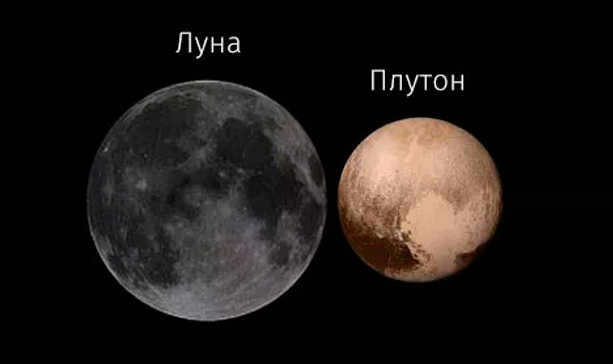
Actually, this region is simply a concentration of nitrogen ice. Indeed, this locale is a type of structure that impacts the weather.
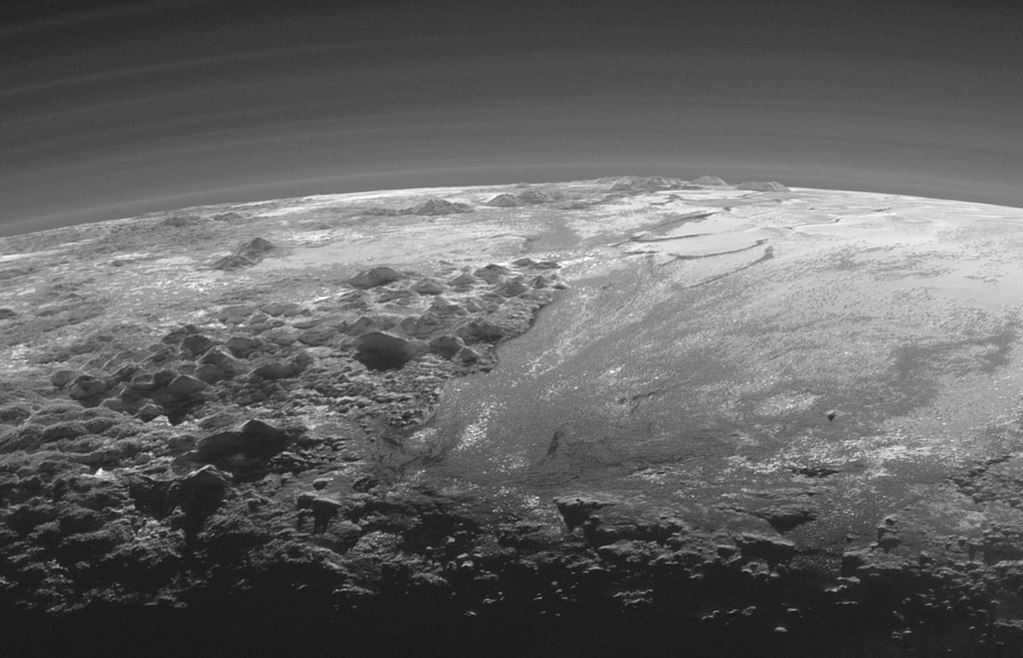
The frozen substance in that region goes through a transformation, transitioning from its solid state to a gaseous form, and eventually returning to the surface as precipitation. However, this is no ordinary ice. The gaseous state moves at an impressive speed of approximately 32 km/h and serves a significant purpose in regulating climate processes.

Incidentally, there is a common belief among many individuals that Pluto is merely a “dwarf” lacking an atmosphere. Nevertheless, it possesses its very own atmospheric layer.
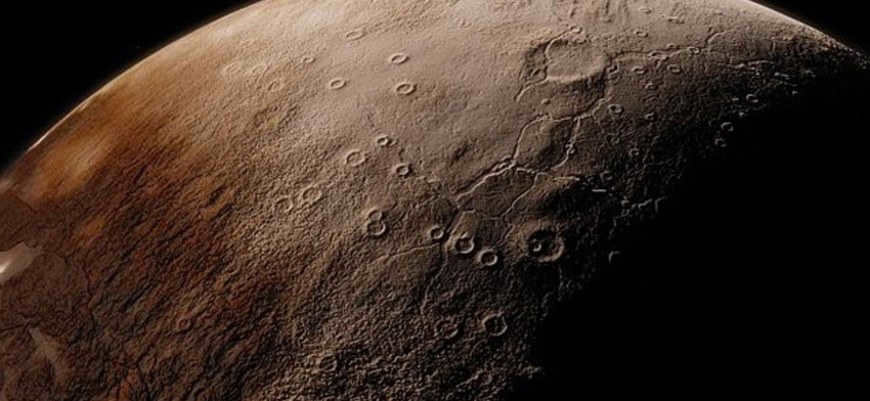
While not as dense as our planet, Pluto still has its own atmosphere, which makes up only about 0.000001% of Earth’s atmosphere. However, it is important to note that Pluto is not completely frozen to the ground. Within its atmosphere, winds blow, precipitation occurs, and other fascinating processes take place.
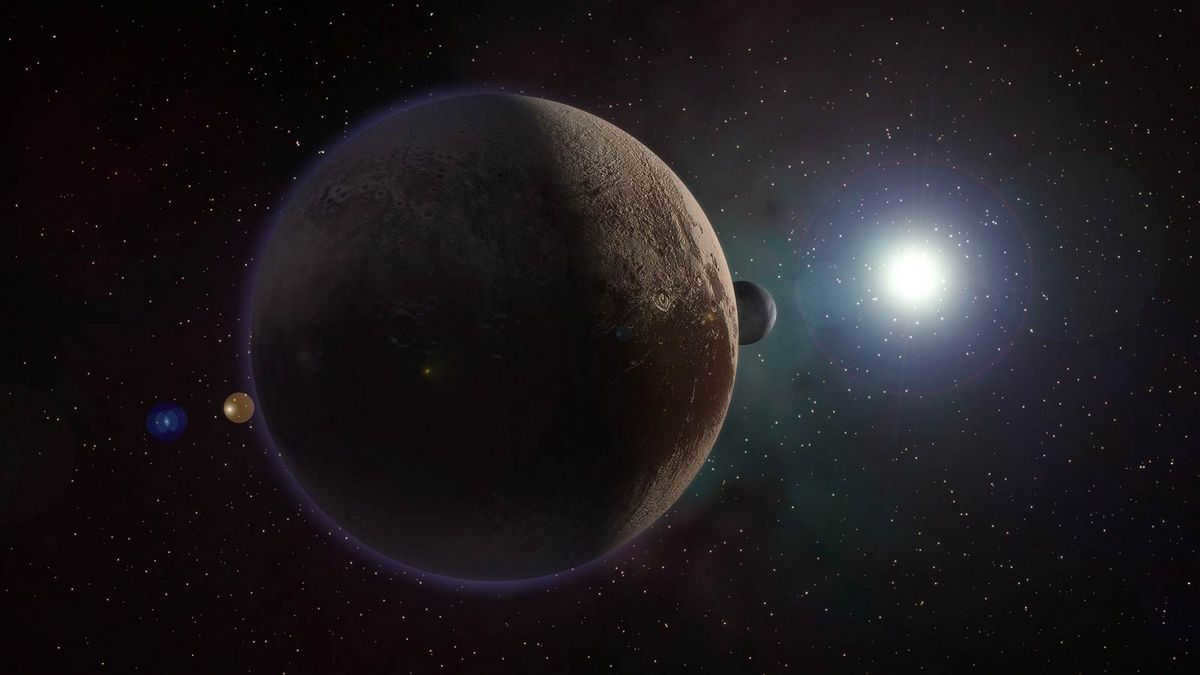
This is indeed an actual frozen planet. However, underneath the layer of ice lies a vast ocean. The possibility of life existing in this environment cannot be disregarded.

Furthermore, researchers have the belief that there exists volcanic action on the celestial body. However, it is imperative to acknowledge that we are not referring to complex organisms, but solely single-celled organisms. In specific regions of Pluto, the ocean is situated nearer to the exterior.

This world is quite stunning. It boasts of mists, peaks and gorges, frozen wastelands and heaps of methane ice. All adventure seekers who dream of strolling on its terrain in the far-off days will undeniably require cozy attire, as the typical temperature plummets to approximately 220 degrees below freezing.

Even though this dwarf planet has not experienced any geological activity for approximately 1 billion years, it continues to defy the expectations of researchers, as it should.
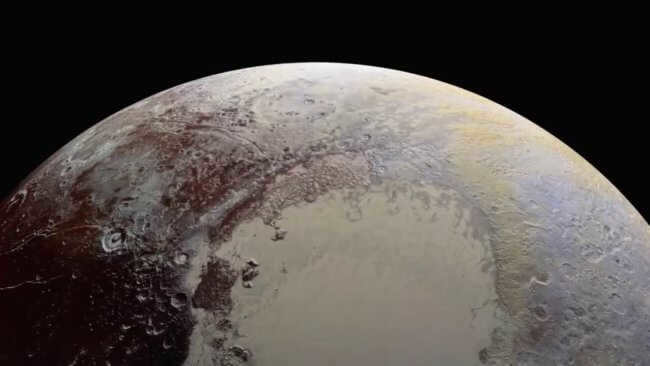
The planet’s layers are in constant motion and undergoing gradual transformations. Moreover, the ice found on this celestial body exhibits remarkable diversity in terms of its composition, encompassing notable elements such as CO, nitrogen, and methane.

This information provides us with valuable insights into the terrain of Pluto, particularly its luminous craters. In fact, these craters appear to be encircled by radiant halos, suggesting the possibility of a volcanic outburst or the illumination from lakes filled with nitrogen.
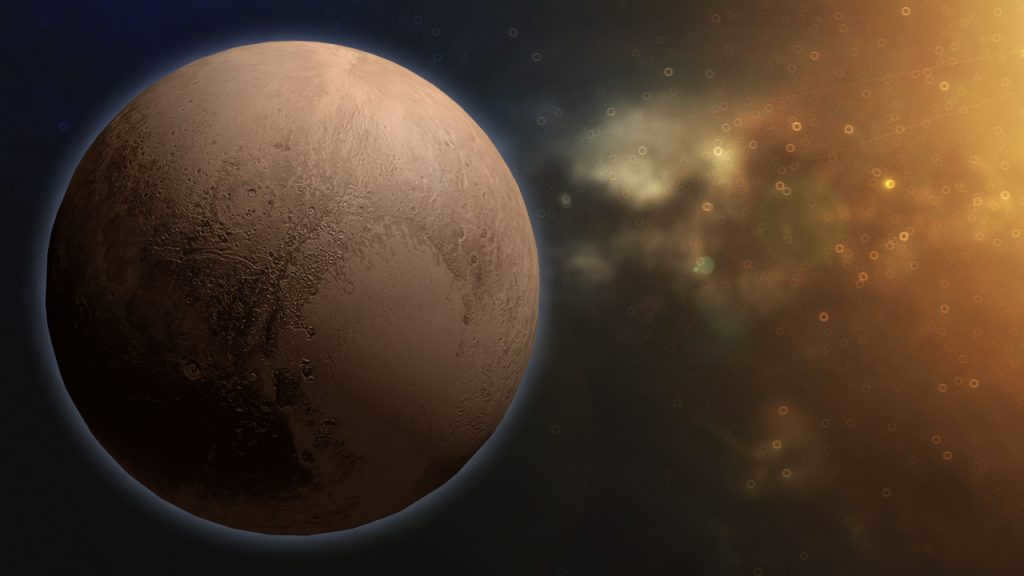
Path
When observing a representation of the solar system, it becomes apparent that all celestial objects travel along circular paths.
However, the path followed by Pluto is noticeably distinct.
Furthermore, it crosses paths with Neptune and occasionally intersects with the path of the Sun.

It is worth noting that the dwarf planet’s orbit exhibits a high degree of elongation, taking the shape of an ellipse, and it is also inclined at a significant angle of 17 degrees to the ecliptic plane.

Pluto’s ability to enter Neptune’s orbit stems from this particular fact. Additionally, the celestial body, referred to as a “dwarf,” exhibits a unique rotation pattern that differs from that of the other planets. Due to its orbit being positioned either above or below the others, Pluto intermittently exchanges positions with Neptune, which is situated closer to the Sun.

Due to its small mass, Pluto’s orbit has a rather unpredictable interaction with Neptune.
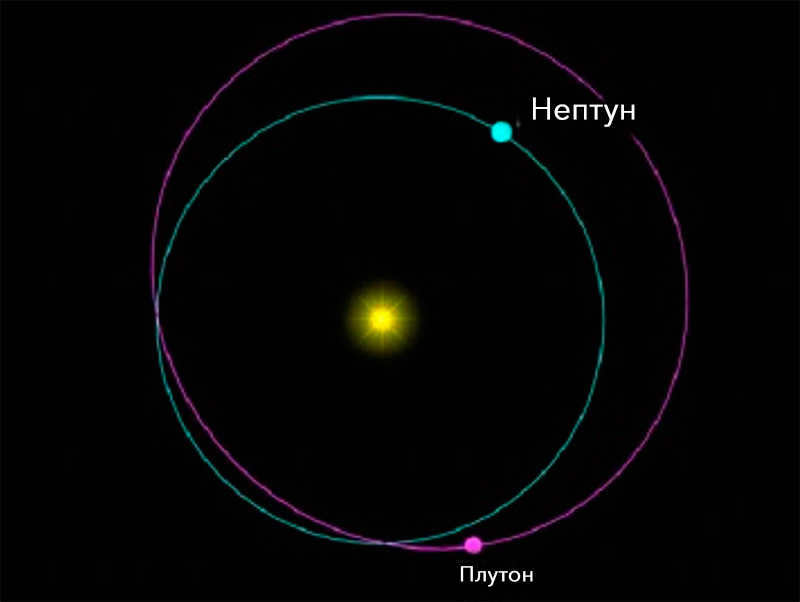
Physical characteristics
Pluto, which was once considered a planet, is now classified as the largest dwarf planet in our solar system. Here are some key features of Pluto:
- Beneath its icy surface, Pluto has a rocky core that is protected by layers of ice. It is believed that there may be an ocean beneath the ice, which could be warmed by radioactive decay.
- The surface of Pluto is comprised of a thin layer of nitrogen, methane, and carbon monoxide. When Pluto gets closer to the sun, these substances vaporize, creating a temporary atmosphere. This process occurs regularly.

- It is quite astonishing to find out that Pluto comprises only 60% of rock, with the remaining portion being composed of ice in different forms.
 Watch the video below for more information:
Watch the video below for more information:
Comparison of Pluto and Earth’s Sizes
The size of Pluto is about 2400 kilometers in diameter and it has five satellites. The biggest satellite, Charon, has a diameter of 1200 km.

The terrain is a combination of various physical features: extensive depressions, impact craters, canyons, peaks, and flat areas.
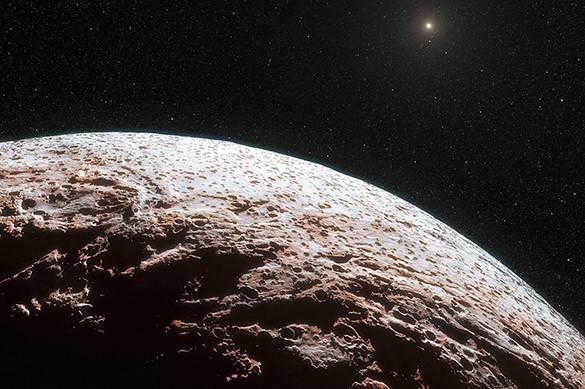
The planet is not as big as the Moon. Moreover, its mass is only 1/15th of the Earth’s mass.

The Composition of Pluto’s Atmosphere
The atmosphere of Pluto is primarily made up of nitrogen, similar to Earth’s atmosphere. However, it is significantly colder and less dense, resembling the conditions found 80 kilometers above the surface of our planet. Additionally, Pluto experiences various atmospheric phenomena, such as winds, fog, and clouds, which are frequently observed on planets within the Earth-group.
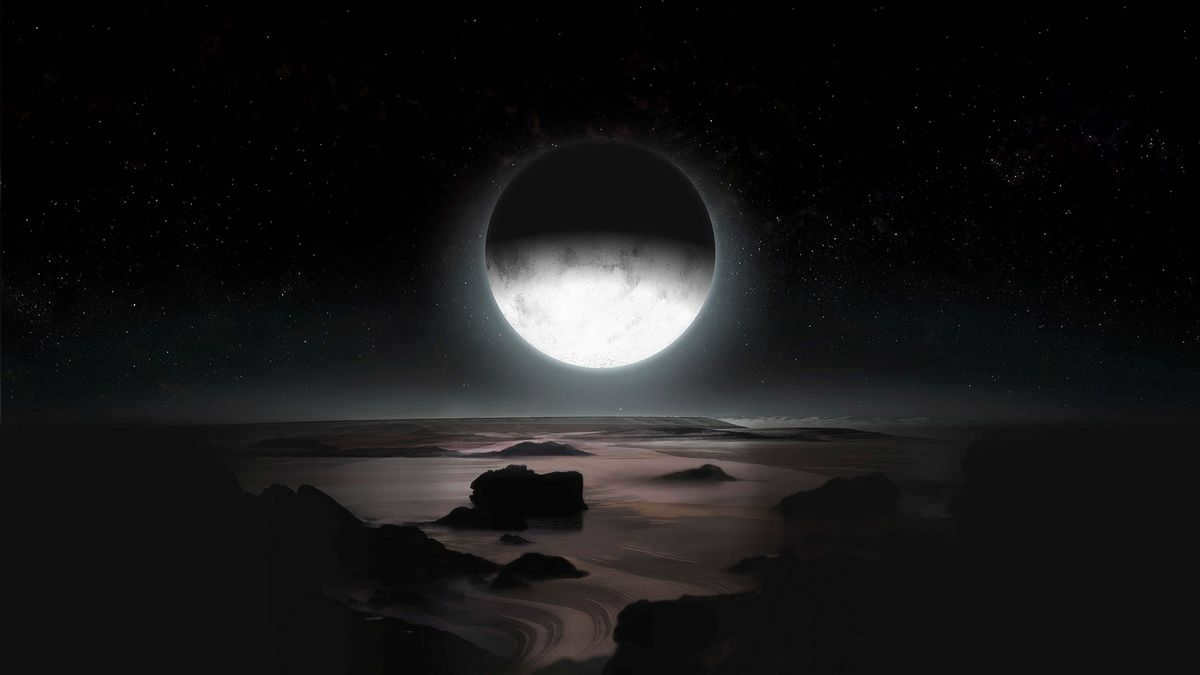
Pluto is losing its atmosphere over time as it gradually escapes into space.
Khoron, one of Pluto’s moons, has a brownish-red polar cap that is caused by the leakage of atmospheric macromolecules into space.
This process of atmospheric leakage has been previously observed and documented.

Scientific consensus suggests that the elimination of excess nitrogen played a crucial role in the emergence and evolution of life on Earth. Recent research on Pluto provides further support for this hypothesis.

The relationship between the masses of the two objects is 1:8, which indicates a significant disparity in size between the satellite and the parent planet.

As a result of this, the combination of Pluto and Charon is referred to as a binary planetary system, and Charon, previously thought to be a featureless icy sphere, has been revealed to be a complete planet with rocky surfaces, craters, and profound fissures, some of which are even deeper than a vast canyon.

The discovery of data about Pluto has provided insights into the fact that even small planets can possess intricate formations and continue to exhibit activity for up to 4 billion years following their creation.
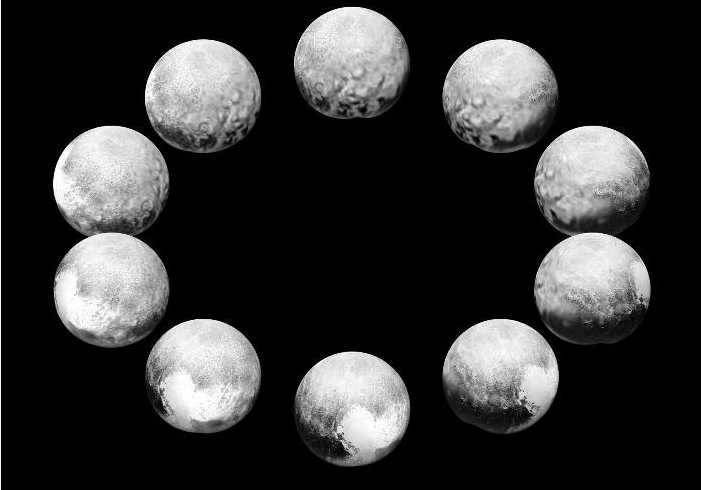
Investigating Pluto
Research indicates that, similar to Earth, Pluto’s surface is undergoing active regeneration.
Contrary to previous belief, this celestial object is not just a lifeless mass of ice and frozen gases.
This newfound activity has revolutionized scientists’ understanding of the formation of small planets.

Pluto’s surface exhibits various features such as tectonics, icy mountain ranges and ridges, smooth plains formed by recently frozen gases and liquids, and cryovolcanoes.

Did you know?
The year 1930 marked the discovery of Pluto, however, it wasn’t until 2015 that scientists were able to closely examine its surfaces. This groundbreaking achievement came about when the New Horizons spacecraft successfully reached the planet and captured intricate details of its terrain. This begs the question – is Pluto truly a planet?

Although Pluto is no longer classified as a planet, it still holds a great deal of fascination for scientists and astronomers.

Pluto has a multitude of enigmas and unanswered questions. Among these is the presence of its radiant craters.
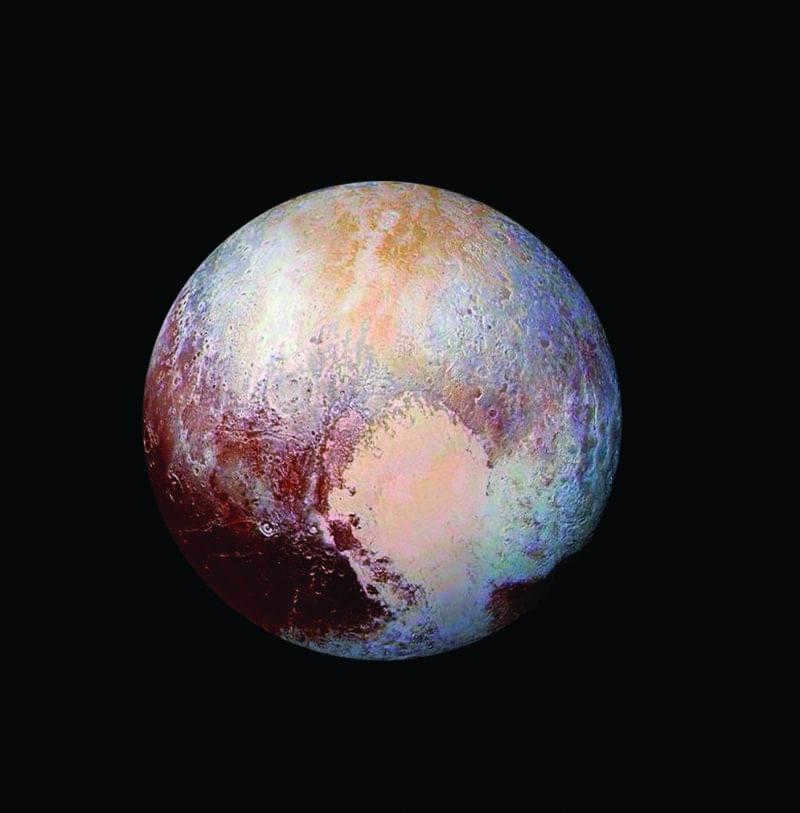
If a person weighs 70 kg on Earth, their mass will be reduced to 5 kg on Pluto.
This is why Pluto is a unique celestial body that stands out from the rest.
Because, as we are aware, planets are formed through the accumulation of substance from the protoplanetary disk that surrounds a young star, but Pluto may have formed in a different way.

The fate of Pluto in 2006
In the year 2006, the International Astronomical Union made a significant decision to reevaluate and redefine the criteria for classifying celestial bodies as planets. Consequently, Pluto was stripped of its planetary status. The question arises, why was Pluto no longer considered a planet?

Ever since then, a celestial object could only be referred to as a planet if it satisfied the subsequent three conditions, with the primary one being enumerated as follows:

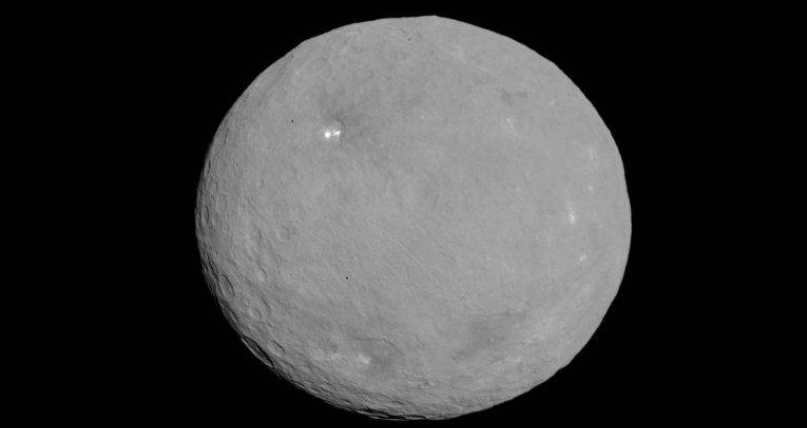
Pluto satisfied the initial two prerequisites, yet it failed to fulfill the third condition, which specifies that a planet must utilize its gravitational force to eliminate other celestial objects from its orbit.

This condition implied that there must not be any other celestial bodies revolving around it, apart from its own moons, and Pluto failed to meet this requirement. Therefore, it failed to meet the third criterion.

Pluto was officially delisted as a planet, a decision that continues to be debated by scientists who believe that Pluto should be reinstated as a planet.

The suggestion is to eliminate the initial and final criteria and retain solely this definition: any celestial object with sufficient mass to maintain a rounded form or something similar should be classified as a planet.
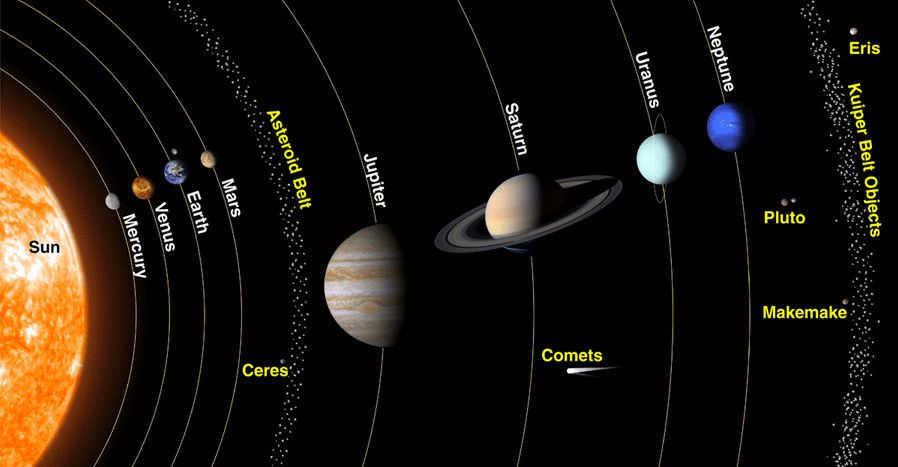
This proposal would not only reinstate Pluto’s status as a planet, but it would also grant planetary status to the Moon and numerous other satellites orbiting Jupiter, Saturn, and Neptune. Additionally, it would acknowledge Ceres, Horon, and various other celestial bodies and asteroids as planets as well.
 A video discussing the subject matter:
A video discussing the subject matter:
Differentiating between planets and “dwarfs”
A celestial body that follows the same orbital path around the Sun as the rest of the planets is known as a dwarf planet.

With sufficient mass, it does not qualify as a planet, unlike the smaller celestial bodies in our solar system that can maintain a spherical form due to gravitational forces.

However, the primary issue is its inability to eliminate other celestial bodies from its orbit. This is the factor that ultimately resulted in the reclassification of Pluto.

Our understanding of the universe has greatly expanded in the past century, providing us with a wealth of knowledge about the cosmos. However, the classification of Pluto as a non-planet in our solar system or any other galaxy remains a topic of discussion. In order to grasp why Pluto is not recognized as a planet, it is crucial to delve into the definition and criteria that determine what qualifies as a planet.

The precise meaning has undergone significant alterations throughout history, but during the period from Galileo to the 19th century, a planet was considered to be any celestial object that revolved around the Sun. Although this definition may appear somewhat ambiguous, it was widely accepted within the scientific community until the year 1801.

In the early 20th century, astronomers made a groundbreaking discovery when they found Ceres, a dwarf planet located in the region between Mars and Jupiter. This finding completely revolutionized our understanding of the solar system, as the characteristics of Pluto that we now know were still a mystery at that time.
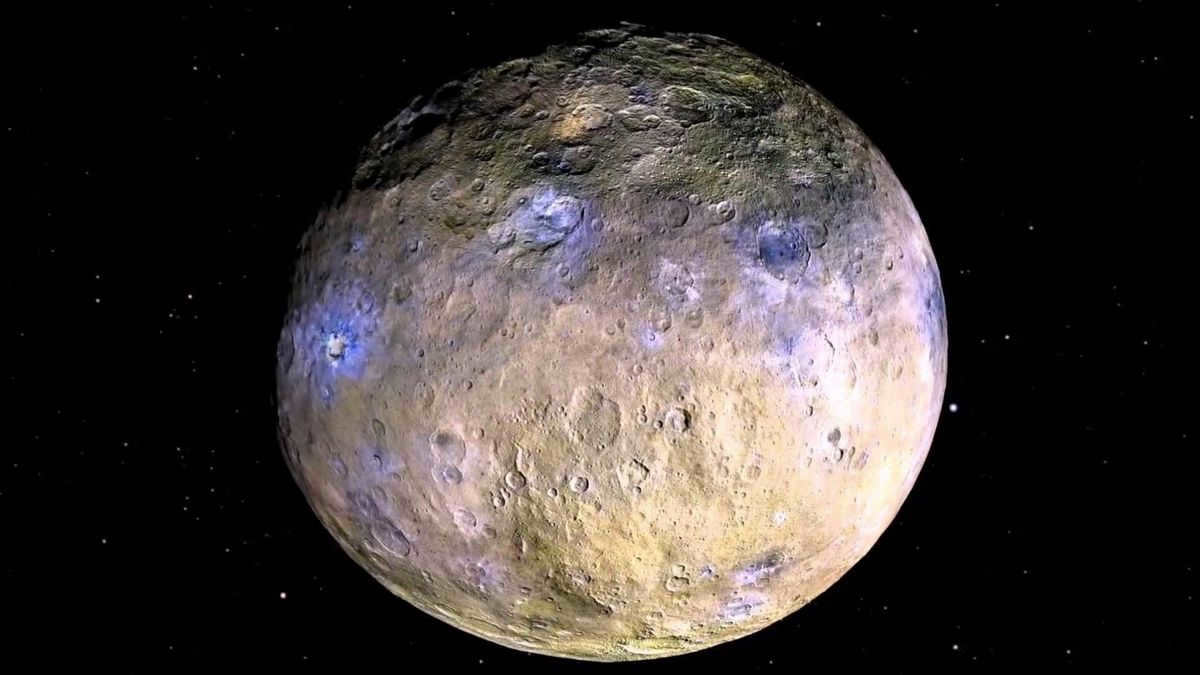
Currently, it is understood that Pluto is a minuscule sphere composed of ice and rock. However, initially, measurements indicated that it possessed a size comparable to that of Uranus or Neptune.

Just one year after being discovered, Pluto’s size was reevaluated and its radius was found to be equivalent to that of Earth. It wasn’t until 1948 that the measurements were revised once more, and the radius of Pluto continued to decrease until astronomers were finally able to accurately determine its exact size in 2006.
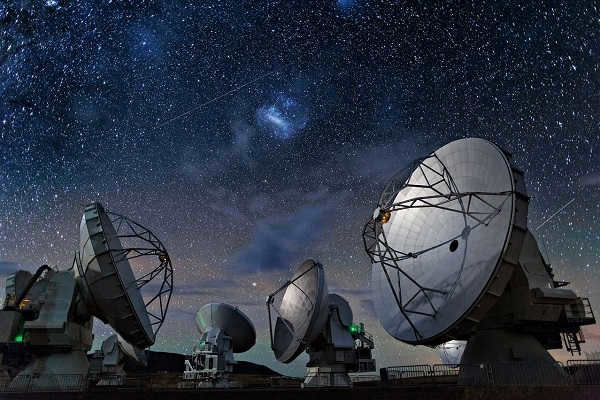
Currently, it is common knowledge that this celestial body, which was once considered a planet, is actually a “dwarf” planet. In terms of size, it is approximately six times smaller than Earth and twice as large as the asteroid Ceres. However, the controversy surrounding Pluto’s planetary status dates back to a much earlier time. Back in 1978, astronomers made a significant discovery when they found the satellite known as Charon.
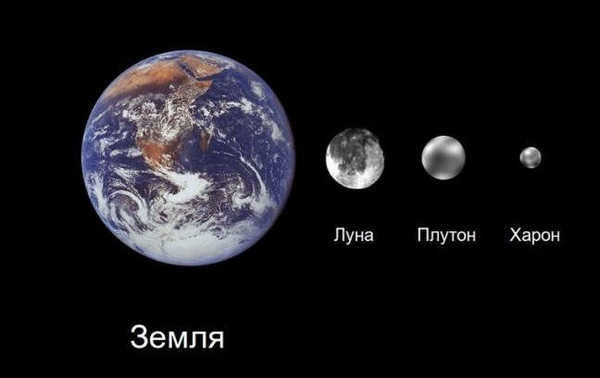
Initially, it may appear that this actually supports Pluto’s case. After all, if it possesses sufficient size to possess satellites, then it unquestionably qualifies as a planet.

Charon might be a bit smaller than Pluto, but the difference in diameter is not significant. Its size is only two times less than that of the dwarf planet.

For a celestial body and its partner, the distinction is rather minimal, as they possess nearly identical mass.
This grants Charon considerable sway over the trajectory of Pluto.
Resulting in a turbulent lateral movement as it traverses the cosmos, a behavior that is quite atypical for a cosmic body.

As additional celestial bodies were discovered beyond the orbit of Neptune, the status of Pluto as a planet started to come under scrutiny among astronomers.

However, Pluto continued to be included in the roster of planets for a couple more generations as not everyone was prepared to bid it farewell, but everything altered with the revelation of Eridas in 2005.

After discovering that it was slightly smaller than Pluto, further measurements revealed that it actually had more mass. This discovery ultimately led to the demotion of Pluto from its status as a planet.


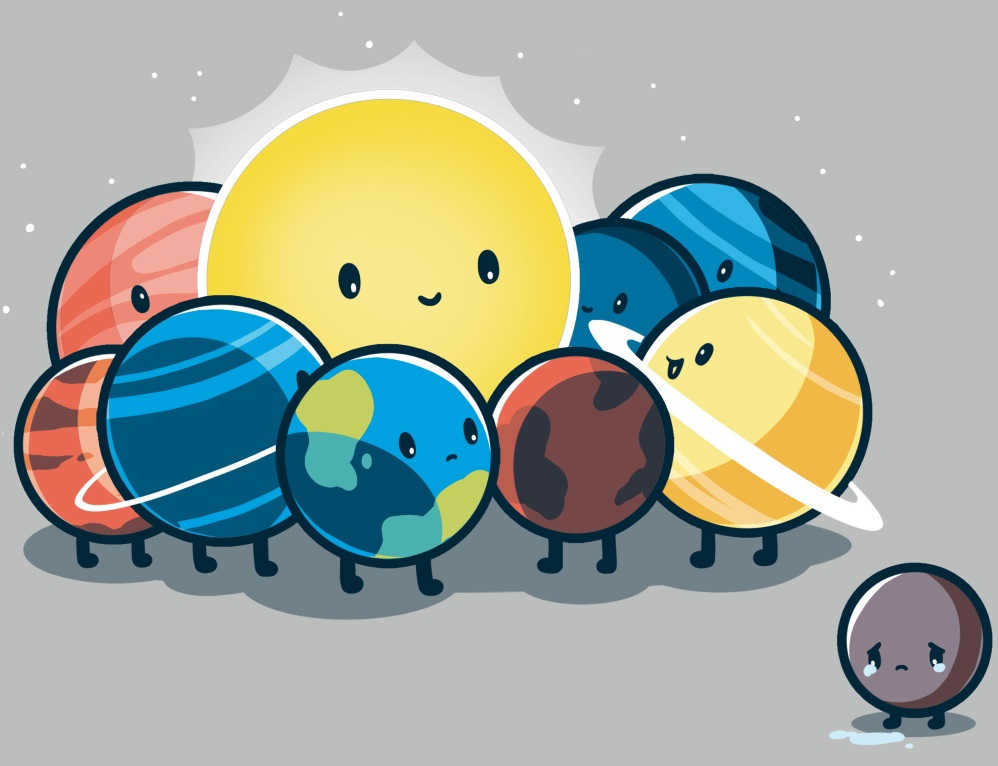 A video discussing this topic:
A video discussing this topic:


